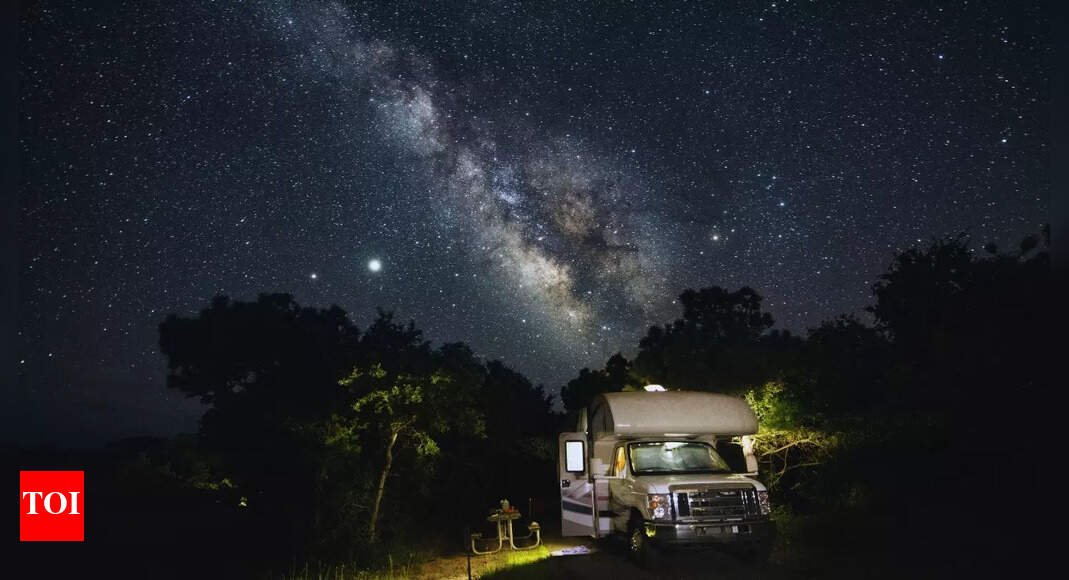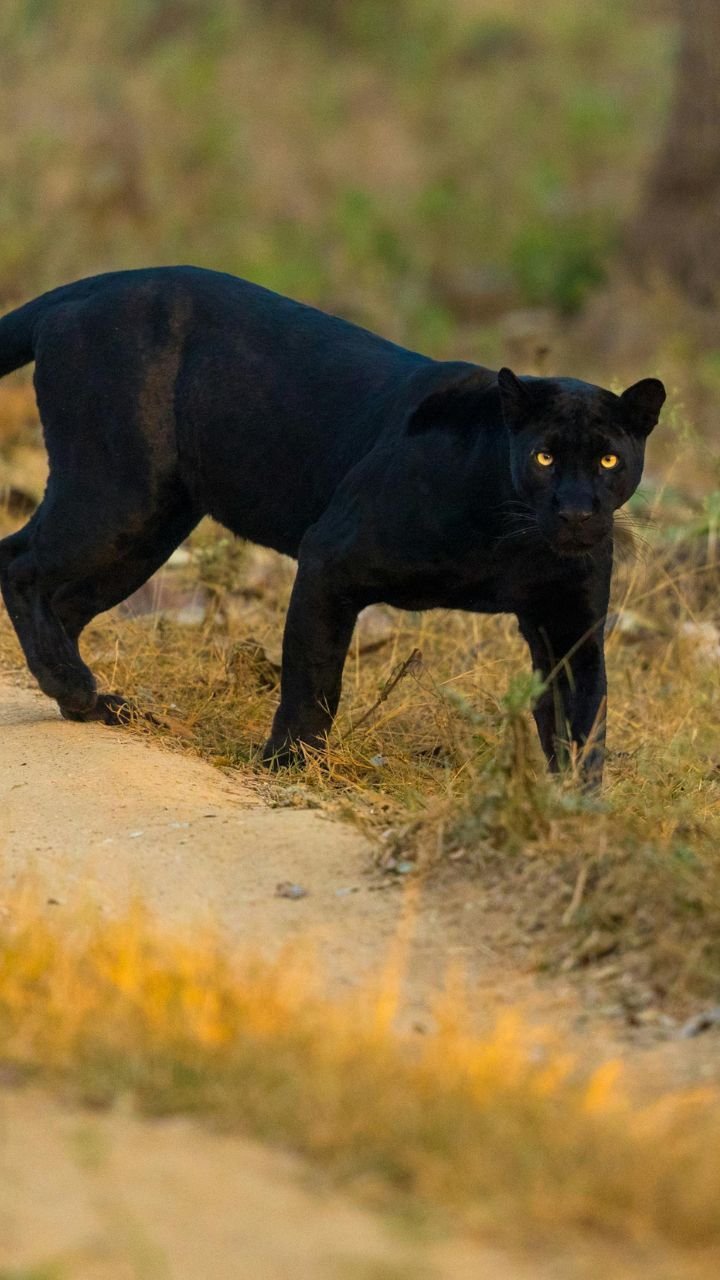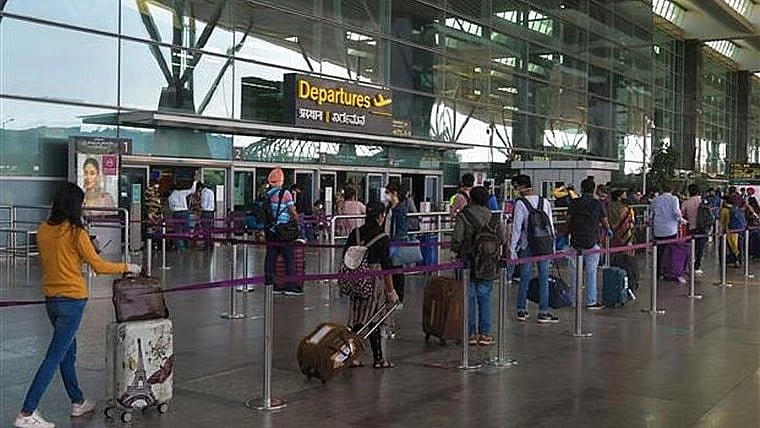Travel Guides & Articles
India and Japan Contrasting Hotel Market Growth, Demand Trends, and Strategic Prospects Across the Asia-Pacific

Published on
August 26, 2025
India and Japan have emerged as two pivotal markets in the Asia-Pacific hotel industry, each showcasing unique growth trajectories and market dynamics. Observers noted that India’s hospitality sector is expanding rapidly, fueled by surging domestic tourism, a growing middle class, and widespread urbanization. In contrast, Japan maintains a mature and stable market, attracting a steady flow of international travelers with its advanced infrastructure and seamless connectivity. Experts highlighted that understanding these differences is crucial for hoteliers, investors, and policymakers aiming to optimize operations, enhance guest experiences, and maximize revenue. Analysts emphasized that India’s domestic demand drives innovation and adaptation, while Japan’s international appeal ensures predictability and long-term stability. Consequently, stakeholders navigating these markets must employ tailored strategies, leveraging India’s booming opportunities and Japan’s established frameworks to achieve sustainable growth and influence Asia-Pacific hospitality trends.
Strategic Navigation of Diverse Hotel Markets
Observers concluded that India and Japan illustrate divergent yet equally significant pathways in the Asia-Pacific hotel industry. Analysts emphasized that stakeholders who assess demand sources, infrastructure maturity, cultural expectations, and economic trends are better positioned to capitalize on opportunities. Reports indicated that Japan’s mature infrastructure and international appeal provide predictability, whereas India’s dynamic domestic tourism offers expansive growth and innovation potential. Experts noted that navigating these differences effectively requires adaptive strategies, cultural understanding, and infrastructure alignment. Observers suggested that hoteliers and investors who successfully interpret these market distinctions can achieve long-term growth, sustainable development, and deliver enriched experiences for both domestic and international travelers across the region.
Key Highlights:
- India’s hotel market is fueled predominantly by domestic tourism, whereas Japan depends on international visitors.
- Japan offers mature infrastructure, predictable demand, and high service standards.
- India provides immense growth potential driven by expanding domestic travel and a rising middle class.
- Adaptive strategies and market-specific solutions are critical for sustainable hospitality expansion.
- Both countries shape Asia-Pacific travel trends and influence global hospitality dynamics.
Global Travel Implications: Shaping Asia-Pacific Tourism Trends
Observers highlighted that the contrast between India and Japan carries broad implications for global tourism. Analysts reported that Japan continues to serve as a benchmark for consistent, international-standard hospitality, attracting travelers seeking seamless experiences and reliable services. In comparison, India’s rapidly growing domestic tourism market illustrates how economic expansion and cultural richness drive internal travel, impacting global perceptions of emerging destinations. Experts suggested that recognizing these differences enables travel planners, operators, and policymakers to anticipate trends, tailor services, and create experiences appealing to both domestic and international travelers. Observers concluded that the combined dynamics of India and Japan are shaping the future of Asia-Pacific hospitality, fostering innovation, sustainability, and diversification across the sector.
Investment Considerations and Market Adaptation
Observers highlighted that investors and hoteliers encounter distinct risk and opportunity profiles in India and Japan. Analysts noted that India’s rapidly evolving market offers high potential returns but requires careful navigation of regional disparities, infrastructure limitations, and regulatory frameworks. Reports emphasized that success in India depends on innovation, adaptability, and deep understanding of domestic consumer behavior. Conversely, Japan’s mature hotel market offers stability and predictable occupancy rates but necessitates continuous quality enhancements and competitive differentiation, particularly in the luxury and niche segments. Experts concluded that investment strategies must be aligned with local market dynamics to optimize profitability and achieve sustainable long-term growth in both countries.
Cultural and Experiential Importance: Enhancing Traveler Engagement
Analysts reported that India and Japan provide distinct cultural experiences that significantly shape hotel guest behavior. Observers indicated that India’s domestic travelers encourage hotels to integrate local customs, regional cuisines, and culturally immersive services, enhancing both authenticity and satisfaction. In Japan, international guests expect high service quality, seamless logistics, and culturally curated experiences aligned with global standards. Experts emphasized that understanding cultural nuances, traveler behavior, and regional customs is essential for hotels to remain competitive and attract a diverse clientele. Observers further suggested that establishments that successfully combine modern amenities with genuine cultural engagement are more likely to achieve higher guest loyalty and sustained growth.
Key Strategic Impacts:
- Strengthening local economies through strategic hotel development and promotion of domestic travel.
- Advancing sustainable tourism practices by integrating local communities and preserving cultural heritage.
Impact on the Asia-Pacific Hotel Industry: Strategic Implications
Observers indicated that the distinct market dynamics in India and Japan have far-reaching consequences for the Asia-Pacific hospitality landscape. Analysts highlighted that Japan’s steady international demand allows hotel operators to forecast occupancy and revenue reliably. Conversely, India’s growing domestic tourism presents opportunities for innovation, expansion, and diversification in hospitality offerings. Experts emphasized that hotels and investors must adopt market-specific strategies, considering regional infrastructure, traveler preferences, and local economic conditions. Reports suggested that understanding these differences allows stakeholders to optimize occupancy rates, enhance revenue streams, and strengthen resilience against market fluctuations. Observers further noted that the growing demand for culturally immersive and authentic travel experiences globally positions India as an emerging laboratory for experiential tourism, influencing broader hospitality trends across the region.
Market Trends and Operational Challenges: Navigating Complexity
Observers reported that the rapid expansion of India’s hotel sector brings operational challenges. Analysts noted that hoteliers must account for regional variations in travel behavior, infrastructure readiness, and market preferences. Reports emphasized that accurate forecasting is complex due to diverse consumer patterns, seasonal travel fluctuations, and regional economic disparities. Experts suggested that successful hotel operations require localized marketing strategies, culturally tailored services, and investment in staff training and technology. Observers further highlighted that Japan’s mature market, though predictable in terms of international arrivals, demands continual innovation and service enhancement, particularly in luxury and specialized segments. These contrasting operational realities underscore the need for tailored approaches in each market to ensure sustainable growth and profitability.
Economic Growth and Market Potential: India’s Booming Opportunities
Analysts indicated that the trajectory of India’s hotel industry is closely linked to the country’s rapid economic expansion. Observers emphasized that with a population roughly ten times that of Japan, India offers a vast market for hospitality services. Rising domestic travel, fueled by urbanization and a growing middle class, drives significant demand for accommodations across urban and emerging regions. Reports suggested that tier-1 cities attract high-end hotel investments, whereas tier-2 and tier-3 destinations are experiencing growth in mid-range and boutique hospitality segments. Experts noted that India’s regional diversity and sheer size, while presenting challenges for market research and operational standardization, simultaneously provide opportunities for innovative hotel concepts, localized offerings, and culturally immersive experiences. Observers concluded that these factors position India as a high-potential market for long-term hotel sector growth.
Infrastructure and Market Maturity: Foundations of Hospitality Growth
Observers highlighted that Japan benefits from advanced infrastructure and highly developed logistical networks, making its hotels accessible and appealing to international travelers. Analysts noted that airports, rail systems, and urban transit networks contribute to smooth, efficient travel experiences. In contrast, India faces infrastructural challenges, particularly in secondary and tertiary cities, affecting hotel operations, regional connectivity, and guest experience. Experts suggested that gaps in road networks, transport efficiency, and data collection require innovative strategies to optimize performance. Reports emphasized that infrastructure disparities influence operational efficiency, guest satisfaction, and investment confidence. Observers concluded that while Japan offers a predictable and mature hospitality environment, India’s infrastructural challenges coexist with significant growth opportunities, necessitating adaptive strategies for stakeholders.
Divergent Demand Sources: Domestic versus International Travel
Observers emphasized that the primary distinction between India and Japan lies in traveler demand sources. Analysts reported that India’s hotel market is driven predominantly by domestic travelers, reflecting strong internal travel networks and an expanding middle class. Reports suggested that domestic tourism accounts for the majority of hotel bookings in India, underscoring the strength of internal demand. Conversely, Japan relies heavily on international visitors, with annual arrivals estimated between 15 and 20 million, highlighting market maturity and consistent global interest. Experts noted that these differences necessitate distinct operational and marketing strategies. While India focuses on domestic preferences and regional diversity, Japan emphasizes international standards, multilingual services, and global branding. Observers concluded that these contrasting demand patterns directly influence pricing strategies, occupancy trends, and investment decisions in both markets.
Source: CoStar
Travel Guides & Articles
Beyond wildlife: India’s best nature trips to plan before 2025 ends |

The wildlife season is just around the corner, and we are excited about that. But this time, we are not here for that. For nature lovers, India’s diverse landscapes do not disappoint. Here we are looking at experiences beyond wildlife safaris, from lush valleys to serene backwaters. The winter months will provide perfect weather for exploring the outdoors. Here are eight exceptional nature trips across India to plan before the year ends.
Mawlynnong, Meghalaya
From Shillong Airport, Mawlynnong is located just 90 km. Also known as Asia’s cleanest village, Mawlynnong’s forests, waterfalls, and living root bridges are some of the best things you will experience in Northeast India. Not to forget, winter is the time when Dawki River (located just 30 km from Mawlynnong) is at it’s best form. Crystal clear water of Dawki River will leave you mesmerised. When in Mawlynnong, stay in village guesthouses. They are budget-friendly, and will let you have authentic traditional stay experience.
Dandeli, Karnataka
Located just 125 km from Goa Airport, Dandeli is nestled in the Western Ghats’ foothills. Its dense forests and Kali River offer adventure and serenity. Its flat terrain and riverine landscape are photogenic, perfect for the ‘gram.’ If you can, take out time to go rafting on the Kali River, or trek to Kavala Caves.Bhitarkanika National Park, OdishaLocated just 150 km from Bhubaneswar Airport, this mangrove ecosystem and wetland, spans 672 sq km. It offers serene boat rides through creeks and sightings of crocodiles and migratory birds. Bhitarkanika is a beautiful mix of wildlife and offbeat travel. Cruise through mangroves, spot estuarine crocodiles, or visit the Olive Ridley turtle nesting site at Gahirmatha.Gokarna, KarnatakaGokarna is located approximately 150 km from Goa Airport. It’s a quieter alternative to Goa. Gokarna’s pristine beaches and coastal cliffs offer a laid-back nature escape, far from the hustle and bustle of an over-crowded (and expensive) tourist trap. Here’s what to do in Gokarna: Relax on Om Beach, trek to Kudle Beach, or visit Half Moon Beach for solitude. The Mahabaleshwar Temple is a beautiful addition to your serene coastal holiday.
Travel Guides & Articles
Top 6 Places To Spot Black Panthers In India – Travel and Leisure Asia

Top 6 Places To Spot Black Panthers In India Travel and Leisure Asia
Source link
Travel Guides & Articles
Travel Drops 8% In June 2025

New Delhi: For the first time since 2001, excluding the Covid-19 years, the number of Indians visiting the United States has fallen as 2.1 lakh Indians travelled there in June 2025, which is an 8 per cent drop compared to 2.3 lakh in the same month last year, according to the US Commerce Department’s National Travel and Tourism Office (NTTO).
The downward trend seems to be continuing in July as well, with provisional data showing a 5.5 per cent decline compared to July 2024.
This slowdown is part of a broader global trend. NTTO data shows that overall international arrivals to the US also fell, with a 6.2 per cent drop in June, 7 per cent in May, 8 per cent in March, and 1.9 per cent in February.
Only January and April saw increases of 4.7 per cent and 1.3 per cent, respectively.
India continues to be the fourth largest source of international visitors to the US. Since Canada and Mexico share land borders with America, India ranks as the second largest overseas market after the UK, followed by Brazil in fifth place.
Together, these five countries contributed nearly 60 per cent of all international arrivals to the US in June.
Traditionally, Indian travellers to the US include students, business professionals, and those visiting friends and relatives.
Leisure travel to America has always been less popular compared to destinations like Southeast Asia, the Middle East, and Europe.
The current slowdown is being seen most clearly among students, though experts believe that business and family visits could also be affected if visa delays and constraints continue.
The Indian diaspora in the US is strong, with over 50 lakh people, which has generally ensured a steady flow of travel.
In fact, NTTO data shows that every June since 2001 had recorded higher numbers than the year before — until now.
April this year had been a positive month for Indian travellers overall, with 29 lakh people flying abroad.
The UAE was the top destination, followed by Saudi Arabia, Thailand, Singapore, and the US.
(Except for the headline, this article has not been edited by FPJ’s editorial team and is auto-generated from an agency feed.)
-
Tools & Platforms3 weeks ago
Building Trust in Military AI Starts with Opening the Black Box – War on the Rocks
-

 Business2 days ago
Business2 days agoThe Guardian view on Trump and the Fed: independence is no substitute for accountability | Editorial
-

 Ethics & Policy1 month ago
Ethics & Policy1 month agoSDAIA Supports Saudi Arabia’s Leadership in Shaping Global AI Ethics, Policy, and Research – وكالة الأنباء السعودية
-

 Events & Conferences3 months ago
Events & Conferences3 months agoJourney to 1000 models: Scaling Instagram’s recommendation system
-

 Jobs & Careers2 months ago
Jobs & Careers2 months agoMumbai-based Perplexity Alternative Has 60k+ Users Without Funding
-

 Funding & Business2 months ago
Funding & Business2 months agoKayak and Expedia race to build AI travel agents that turn social posts into itineraries
-

 Education2 months ago
Education2 months agoVEX Robotics launches AI-powered classroom robotics system
-

 Podcasts & Talks2 months ago
Podcasts & Talks2 months agoHappy 4th of July! 🎆 Made with Veo 3 in Gemini
-

 Podcasts & Talks2 months ago
Podcasts & Talks2 months agoOpenAI 🤝 @teamganassi
-

 Mergers & Acquisitions2 months ago
Mergers & Acquisitions2 months agoDonald Trump suggests US government review subsidies to Elon Musk’s companies





















